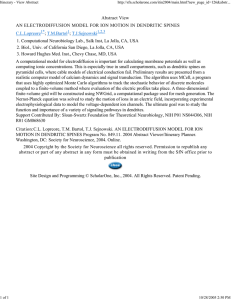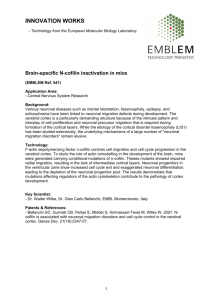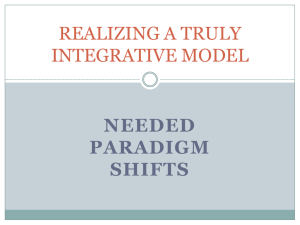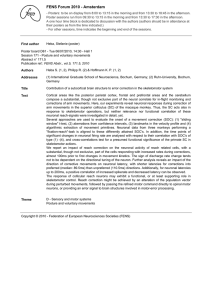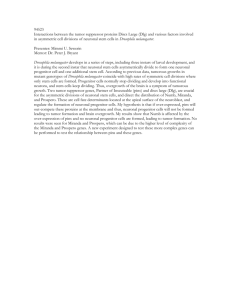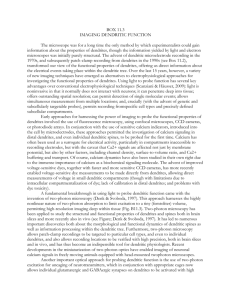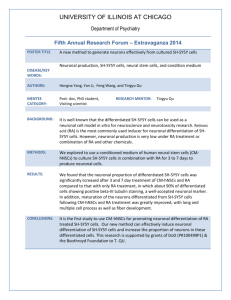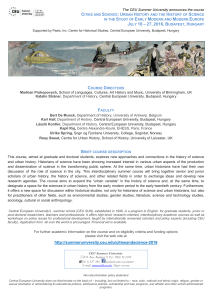Fast three-dimensional imaging of neuronal and dendritic spine
advertisement
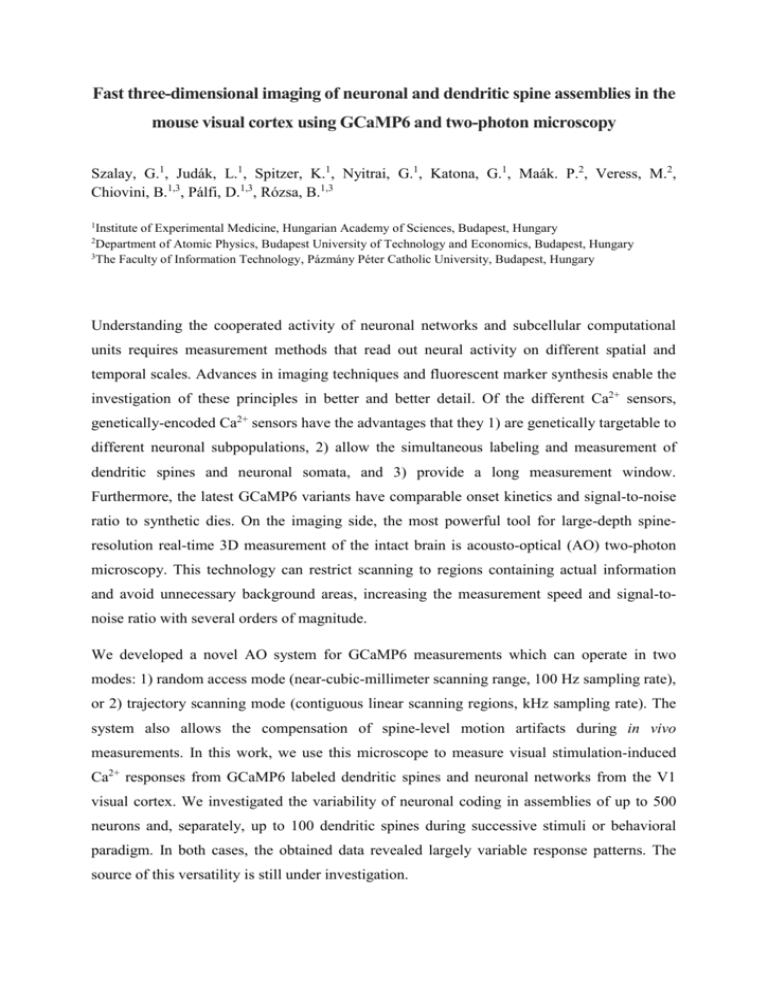
Fast three-dimensional imaging of neuronal and dendritic spine assemblies in the mouse visual cortex using GCaMP6 and two-photon microscopy Szalay, G.1, Judák, L.1, Spitzer, K.1, Nyitrai, G.1, Katona, G.1, Maák. P.2, Veress, M.2, Chiovini, B.1,3, Pálfi, D.1,3, Rózsa, B.1,3 1 Institute of Experimental Medicine, Hungarian Academy of Sciences, Budapest, Hungary Department of Atomic Physics, Budapest University of Technology and Economics, Budapest, Hungary 3 The Faculty of Information Technology, Pázmány Péter Catholic University, Budapest, Hungary 2 Understanding the cooperated activity of neuronal networks and subcellular computational units requires measurement methods that read out neural activity on different spatial and temporal scales. Advances in imaging techniques and fluorescent marker synthesis enable the investigation of these principles in better and better detail. Of the different Ca2+ sensors, genetically-encoded Ca2+ sensors have the advantages that they 1) are genetically targetable to different neuronal subpopulations, 2) allow the simultaneous labeling and measurement of dendritic spines and neuronal somata, and 3) provide a long measurement window. Furthermore, the latest GCaMP6 variants have comparable onset kinetics and signal-to-noise ratio to synthetic dies. On the imaging side, the most powerful tool for large-depth spineresolution real-time 3D measurement of the intact brain is acousto-optical (AO) two-photon microscopy. This technology can restrict scanning to regions containing actual information and avoid unnecessary background areas, increasing the measurement speed and signal-tonoise ratio with several orders of magnitude. We developed a novel AO system for GCaMP6 measurements which can operate in two modes: 1) random access mode (near-cubic-millimeter scanning range, 100 Hz sampling rate), or 2) trajectory scanning mode (contiguous linear scanning regions, kHz sampling rate). The system also allows the compensation of spine-level motion artifacts during in vivo measurements. In this work, we use this microscope to measure visual stimulation-induced Ca2+ responses from GCaMP6 labeled dendritic spines and neuronal networks from the V1 visual cortex. We investigated the variability of neuronal coding in assemblies of up to 500 neurons and, separately, up to 100 dendritic spines during successive stimuli or behavioral paradigm. In both cases, the obtained data revealed largely variable response patterns. The source of this versatility is still under investigation.
